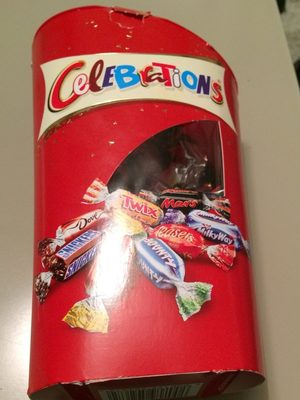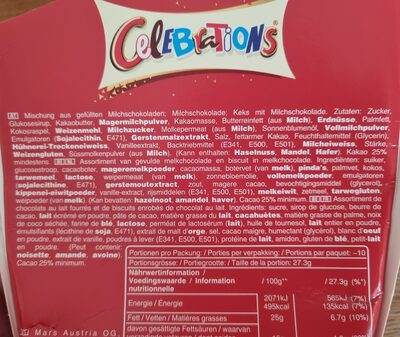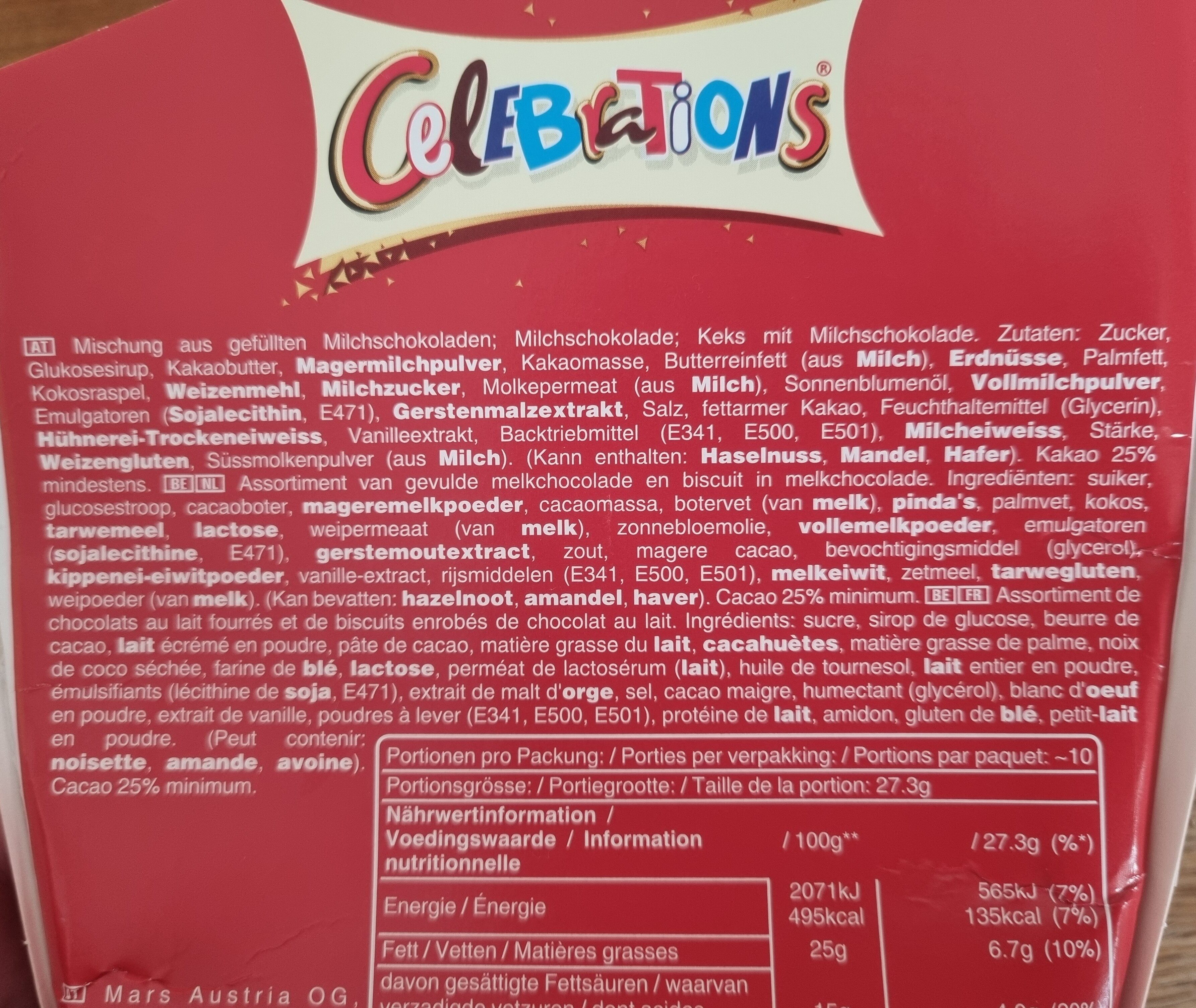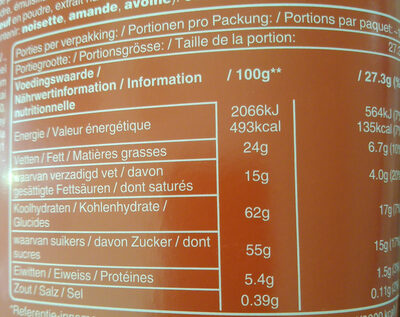Celebrations - 280g
This product page is not complete. You can help to complete it by editing it and adding more data from the photos we have, or by taking more photos using the app for Android or iPhone/iPad. Thank you!
×
Barcode: 5000159502672 (EAN / EAN-13)
Quantity: 280g
Packaging: Box
Brands: CÉLÉBRATIONS
Categories: Snacks, Barres, Barres chocolatées, Bonbons de chocolat, Cacao et dérivés, Confiseries, Confiseries chocolatées, Snacks sucrés
Labels, certifications, awards:
Green Dot
Traceability code: 820C15LO00
Stores: Magasins U, carrefour.fr
Countries where sold: France
Matching with your preferences
Report a problem
Data sources
Product added on by kiliweb
Last edit of product page on by segundo.
Product page also edited by bubuch, cominou, driveoff, ecoscore-impact-estimator, foodless, g123k, gluten-scan, halal-app-chakib, magasins-u, moon-rabbit, openfoodfacts-contributors, packbot, quechoisir, yuka.WDZJQUs2SURvZXNraThZdjV6anQyTU1vK0phVGNVT2FjOVlSSVE9PQ, yuka.WklvbkZJazRpdDRibnRnNitTT0o5ZE4reE1lYlFVaVpCdGN3SVE9PQ, yuka.ZmJzTU1ad2JsTllrbGRzeHpqWEx5TkZNbXE2bFpuam9HZHNCSWc9PQ.












